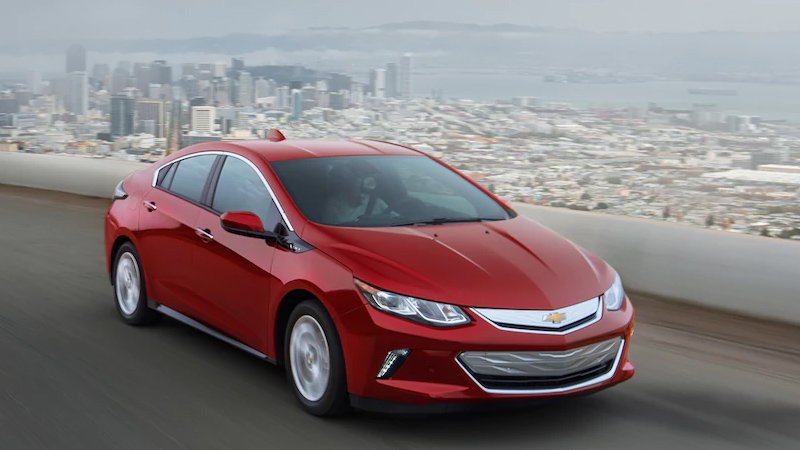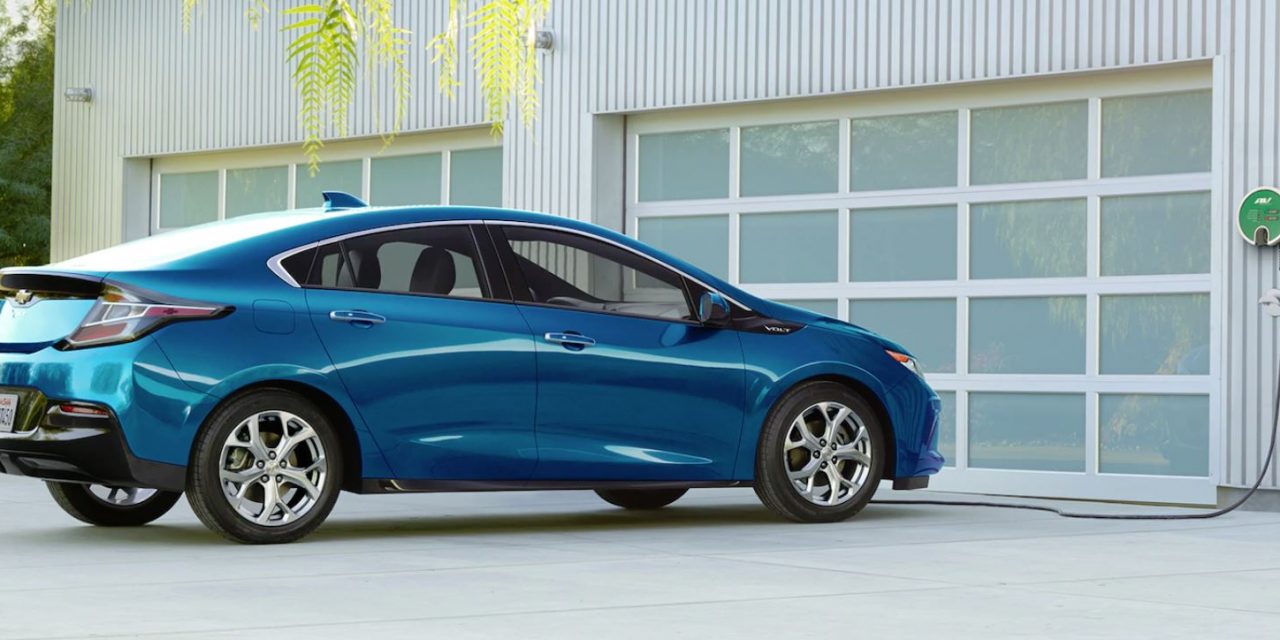The announcement by General Motors of five plant closings causing the loss of more than 14,000 jobs, which has sparked bipartisan outrage across the nation, also marks the premature end to one of the U.S. auto industry’s greatest successes in recent decades.
GM’s cutbacks include a halt in production of the Chevy Volt, an innovative plug-in hyrbrid that was widely proclaimed as a “game-changer” when it was introduced in 2010-11. GM called the car their “moon shot” and it won virtually every Car of the Year award from the trade magazines after its debut.
The Volt also received J.D. Power awards for customer satisfaction, and subsequent improvements to the futuristic vehicle generated still more rave reviews from auto writers who make their living by road-testing and scrutinizing cars. One auto critic called the Volt “a wonder to behold.”
Yet, the compact Volt never sold well in this era of SUVs and pickups, and on Monday General Motors unceremoniously dumped the car, once called the future of the 21st Century automobile, without even a last hurrah. The last Volt will roll off the line at the (Detroit-Hamtramck) Poletown plant in March.
Despite all the early fanfare, the Volt never got a fair shake. It entered the car market shortly after Washington granted bridge loans to GM and a structured bankruptcy to avoid collapse. So, the Volt somehow became viewed as an Obama administration creation, though the former president was nothing more than a fan, not a mastermind.
Before they had even sat behind the wheel of the electric-powered Volt, consumers in 2010 were plunking down money to snatch up the first shipments of the cars which didn’t arrive in most states, including Michigan, until March 2011.
Politics helped ruin the Volt
The beauty of the Volt was that it fully addressed the “range anxiety” that plagued car buyers when contemplating a plug-in. They feared running out of juice in an area where no recharging stations were available. But the Volt’s gas engine that effortlessly kicks in when the battery runs dry was what made the car unique. Rather than relying upon two sources of power simultaneously, which is the case with hybrids, the Volt has two separate power sources.
In the end, the Volt may have been the one great American invention that was beaten down by crass politics. Talk-show host Rush Limbaugh loudly led the way, labeling GM as “Government Motors” and, without a shred of evidence, declaring that the Volt was a lemon.

One of my favorite stories about the evolution of the Volt is that the company executive who first gave the ambitious project a thumbs up in 2004 was Bob Lutz, who was then GM’s chief strategist. The gravely voiced Lutz, a former Marine, was no tree-hugger. He once famously declared that global warming is a “crock of sh–.”
In his early years within the industry, Lutz, a true “car guy,” specialized in envisioning new muscle cars. But with his stamp of approval, detailed designs for the Volt took place at the Tech Center in Warren starting in 2006 and two years later the engineering work kicked in that led to production.
When the clownish, Limbaugh-led assault on the Volt took shape, Lutz made it known that he didn’t think much of politicians trying to trash an innovative American car – an engineering breakthrough – just to taint a president.
The Volt has its own fan club
To be clear, Americans’ increasing appetite for big, gas-guzzling vehicles ultimately led to the Volt’s demise. Low, stable gas prices in recent years were a key factor. Also, consumers couldn’t gain a level of comfort with the idea of recharging their car at night for the next day’s commute. And GM’s abject failure to properly market the car, though it rarely needs a tank of gas, added to the slide.
But some criticisms of the Volt seem rather silly in retrospect. From a political standpoint, some car buyers objected to government tax credits of up to $7,500 for hybrids and plug-ins. Yet, that policy benefited Japanese- and South Korean-made cars as much or more than the Volt.
Another complaint centered on the Volt’s initial $41,000 price tag. That cost was gradually whittled down to about $33,000. More importantly, these days consumers seem to have little hesitation to spend $50,000 or more on a pickup that requires constant fill-ups at the gas pump.
Meanwhile, Volt owners have built a community online where they love to swap stories about their favorite car. They talk about how they sometimes go months without buying gas. Or how the Volt is whisper quiet, it offers a smooth ride, and its peppy acceleration makes it fun to drive.
The newest version offers a range of about 420 miles, thanks to 50 miles on battery power and then a seamless switch to the gas engine that provides an overall experience of about 118 mpg.
GM claims the cutbacks announced Monday correlate with a corporate strategy of emphasizing electric cars and autonomous, self-driving vehicles. Count me among those skeptics who do not believe autonomous cars will become widely popular anytime soon. More importantly, I do not understand General Motors’ long-term emphasis on electric vehicles when the Volt, with its backup gasoline-fired engine, provided a much more marketable approach to snag auto buyers.
GM has made its share of corporate mistakes in the past – clunkers like the Corvair and the Vega immediately come to mind. But memories of the Volt will not fade away. I wonder if, in time, the Volt will finally get its due when cars just like it – and even better – are found on every street in America.




The only reason I can think of in GM stating emphasis on electric cars, but discontinuing the Volt is money and profit margin. I am a 2017 Volt owner, it may turn out to be the best and most reliable car I have ever owned. As an engineer, I marvel at the feat of this combination engine design, but I also think it has to be quite expensive to produce for a small car segment. Just look at some of the YouTube videos on the design and you will be amazed.
Quite frankly, it is the perfect “gateway car” to electric vehicles. I have gone as long as 9 months without stopping at a gas station and yet have no hesitation at planning long trips. It isn’t uncommon to see posts of owners getting 100,000 miles or more out of their brake pads because they frequently use the regenerative braking features of the electric engine.
I am not sure I am on board with how much politics ruined it here. I mean, who the hell cares what RL thinks? His audience was probably never going to buy this type of vehicle anyway. I also wonder what your data is behind “consumers couldn’t gain a level of comfort with the idea of recharging their car at night for the next day’s commute.” I would find it odd someone would find a 10 second task to be “uncomfortable.” Clearly GM failed on consumer education if that is the case.
I have heard stories (unverified) that GM was losing money on the car. That would explain the lack of marketing. Why sell more losses? There is clearly some evidence in the vehicle where some normally standard features, like power seats, have been removed for cost cutting measures. For now, I don’t see that they have discontinued the Bolt made in Lake Orion. So perhaps they have ideas on reducing the costs of a purely electric vehicle that were not possible with the Volt. It would also be sad if this significantly impacts the LG Chem plant in Holland Michigan as they produce the batteries for GM.
Anyway, I am proud to own a vehicle produced in Detroit, one that I love, made for the future we desperately need to transition to.